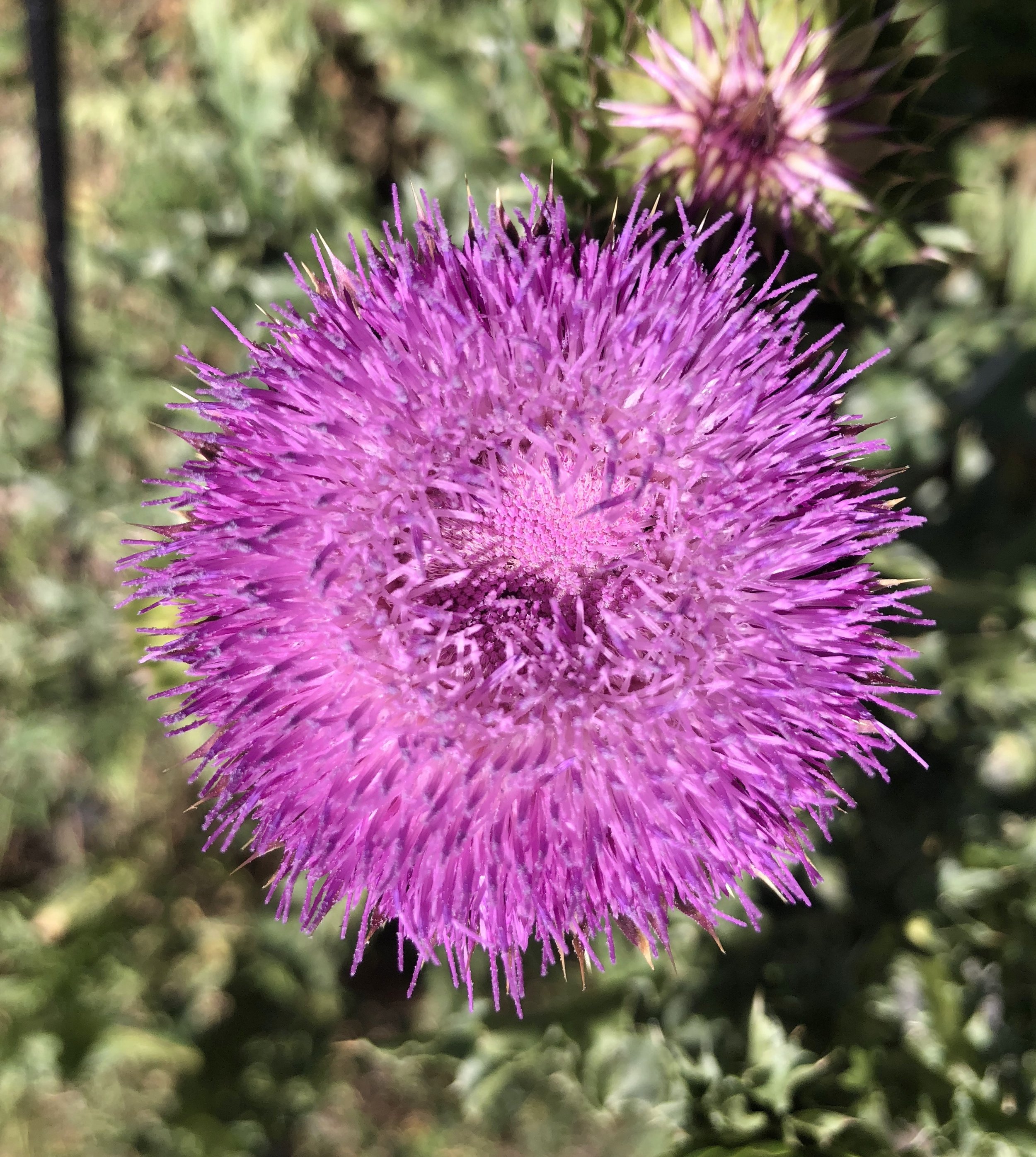
A Beautiful Enemy

The Scourge of Musk Thistle: An Invasive Species impacting New Mexico
If you've been hiking in New Mexico and come across a tall, spiky plant with beautiful purple flowers, chances are you've encountered musk thistle. This invasive species was originally imported from Scotland in the 1800s and has since become a troublesome weed in many parts of the United States, including New Mexico. In this blog post, we'll explore the musk thistle's life cycle, the efforts being made to eradicate it, and why it's such a problem in the first place.
The Life Cycle of Musk Thistle
Musk thistle is a biennial plant, which means that it takes two years to complete its life cycle. In its first year of growth, the plant produces a rosette of leaves close to the ground. The rosettes can grow up to 2 feet in diameter and often remain green throughout the winter.
In its second year of growth, the plant sends up a tall stem that can reach heights of 6 feet or more. The stem is covered in spines and bears clusters of showy purple flowers. Once the flowers bloom and produce seeds, the plant dies. A mature musk thistle can produce 250 to 350 seeds per flowerhead, and a single plant can generate up to 12 000 seeds in total!
Eradication Efforts in New Mexico
Given how prolific musk thistles are at seed production, it's no surprise that they can quickly take over an area if left unchecked. In fact, musk thistles are considered one of the most troublesome weeds in New Mexico and have invaded pastureland, rangeland, and natural areas such as forests and riverbanks. Efforts are being made at both the state and federal levels to control musk thistle populations through both biological and chemical methods.
Biological control involves releasing insects that feed on musk thistles or using grazing animals such as goats to eat them. Chemical control involves using herbicides to kill young plants before they flower and produce seeds. These eradication efforts are essential not just for the sake of aesthetics but also for protecting native plant species from being crowded out by invasive plants like musk thistle.
Musk thistle may be pretty to look at, but make no mistake: this is one invasive species that you don't want taking over your local hiking trails! By understanding its life cycle and supporting eradication efforts, you can help protect New Mexico's ecosystem from this troublesome weed.






